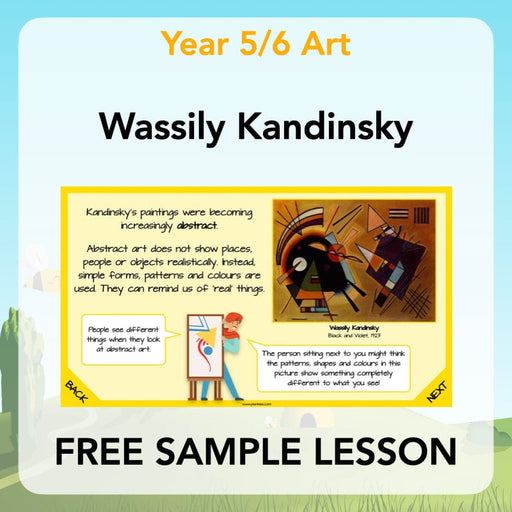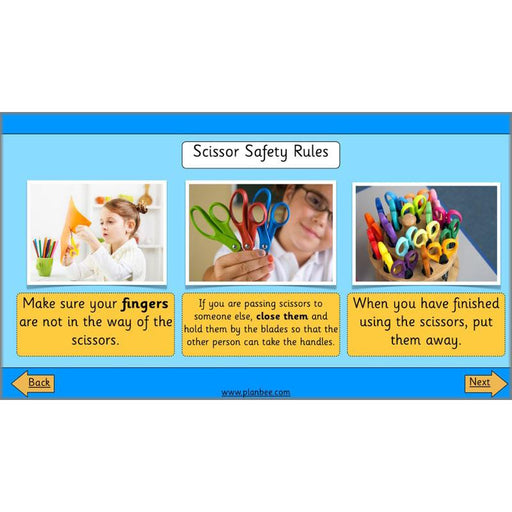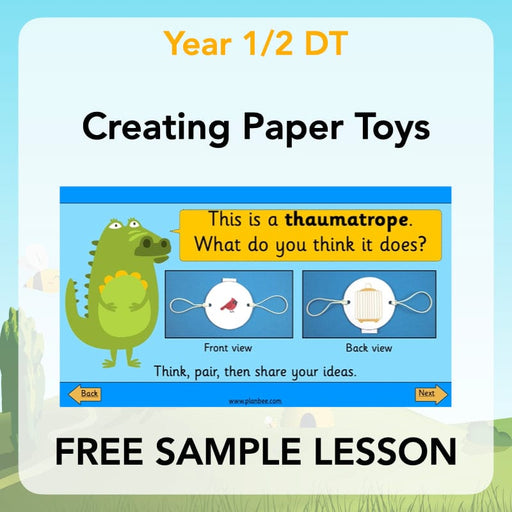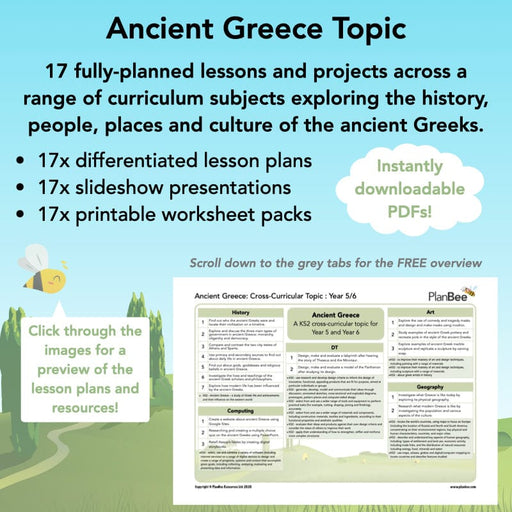
What to do when you have a student teacher in your class
The first time I was told I was going to have a student teacher in my class I was an RQT and was buzzing with excitement to help another person start their journey into their teaching career. Once that had worn off however, I began to think about how much of a responsibility this was: it was my job to make sure that the trainee had a worthwhile and positive experience in my class. Not going to lie, this was a very daunting thought for me at the time, especially as I was still so new to the profession.
Since then I have had several trainees in my classes and I was glad to accept the role of student-teacher coordinator for my school. I’ve learnt from and reflected on the experiences my colleagues and I have had when supporting a trainee teacher and thrown a few tips and pieces of advice into this list.

Know your stuff
No-one expects you to know everything but it can be useful to brush up on a few things before the trainee teacher arrives.
Some universities and teacher training schemes will offer training to the class teachers before the trainees arrive in the classes. These training courses can be invaluable if you’re nervous about having a trainee in your class as they will clearly set the expectations of you as the class teacher. If not, arrange a meeting with the trainee’s tutor to go through your responsibilities.
It will be useful to brush up on the eight teaching standards (brownie points for anyone that can remember all of them off the top of your head now) that the student will be assessed against. As the class teacher, you may not be asked to officially assess the trainee, but your viewpoint and opinions of the trainee’s practice and performance during the placement will count towards their overall assessment.
If possible, familiarise yourself with the trainee’s planning formats and/or paperwork that they will be using during the placement. In my experience the tutors and training courses are pretty strict about the trainee using the pre-made formats for planning, evaluations, observations and group feedback, all of which will need to be kept in an organised folder by the trainee. If you have a basic understanding of the paperwork, you can help them keep on top of this part of their training.
Communication

If you’ve ever worked in a school with more than one-form entry, or in a job-share, you’ll know the importance of good communication between the people you work with. The same applies to the trainee teachers who will be working with you in your class.
Agree on and arrange a regular time slot (30 minutes to an hour each week) for you and the trainee to meet. This sounds obvious but, as teachers, we know how easy it is for things be pushed to one side for other jobs. It is important for you and the trainee to expect this meeting and prepare a few things to say.
Use your first meeting to get to know the person you will be working with for the next few weeks. What are their favourite (and least favourite) subjects to teach? Why is that? Is there anything they feel they need to work on during their placement? What are their professional and personal targets for this placement? Do they have any directed tasks they need to complete during the placement? (It’s good to find this out as early as possible to save a scramble to find time to film themselves reading a story at the end of the placement).
For most trainees, these regular meetings can be spent reflecting on the targets that their tutor has set them, asking questions about the class, talking through the upcoming week’s timetable and testing out ideas with you for the lessons you’ve arranged for them to teach. That’s not to say that you should save up all your comments for this arranged meeting, you could be there all night! Little and often feedback works, and is usually best as soon as possible after the trainee’s teaching session. Additionally, try to make sure you’re telling them when something they did went well - reminding them when they’re on the right tracks can do wonders for their mental wellbeing, especially when they feel stressed and overloaded.
This meeting can also be spent checking though their planning with them if time allows. Remember that although the trainee is teaching the class, their plans, expectations and assessments are still for the class that you are ultimately responsible for.
Agree with a form of communication between you and the trainee that you are both comfortable with and set boundaries. It is important that you are both on the same page. Clear boundaries make it easier for everyone involved. If you don’t want to be contacted after 6pm, or you know that any emails won’t be responded to until the morning, make this clear from the start. It is also important that the trainee is aware of the procedure to use if they will be absent. You, their tutor and the school will need to be aware of any missed days so that cover can be arranged for any of the lessons they will be teaching and arrangements made so that they still meet the quota of teaching days for their training – all good training for the inevitable sick days they will have during their NQT year!
Trainees have told me they appreciated being given a welcome pack for the school. This was already policy for any new staff at the school but I extended this courtesy to the trainees. They told me that it made them feel welcome and part of the school team from day one. It contained everything they needed to know about the school to take home and process in their own time (which after a day of information overload can help with the overwhelming first day nerves).
The pack included:
• The school’s teaching and learning policy, marking/feedback policy, safeguarding policy, behaviour policy and (if I knew it) the subject policy for the trainee’s specialist subject. Explaining the school’s behaviour policy is really important so that consistency is preserved in the class. If the trainee knows what to expect of the kids and any rewards and sanctions that the school uses, e.g. team points, stickers, etc. then they will feel more confident in front of the class.
• A map of the school - Each trainee teacher got a tour of the school on arrival to show them the facilities, staff room, resource room and playgrounds, but this was a little extra just in case. The map had clear fire-escape routes marked on them as well as the fire assembly area.
• Information about the class including a class list, SEN notes, PP, etc. This was talked through with the trainees to give them a bit more insight into the class they would be teaching*. Before you include this, check your school’s data protection and safeguarding policy.
• Information about expected dress code for the school - I found this was an area that a lot of trainees struggled with. If the information is readily available from day one, you have covered your back if there are any issues later on.
• A rough timetable for the class e.g. PE days, assembly and break times (with break duty days marked).
*I was always careful in these meetings to share information that I thought the trainee would need, but not to give them a biased view of the children.
Time management
Most trainees will have the same PPA time as you, as well as an extra chunk of non-contact time out of class.
When you’re out of class together, model how to use this time effectively to reflect on the past week’s teaching, plan next week’s teaching and catch up on any other jobs that need doing. Your trainee will have to do all of these things as well as keep their placement folder up to date with individual lesson plans and evaluations.
As with your communication, you need to set expectations with what you expect from their planning and how far in advance you’d like to receive it. Remember you need to check their planning and you need to give yourself time to do this as well as time for the trainee to amend the planning based on any feedback you have. Receiving the plans the morning they are expected to be taught won’t leave either of you much wiggle room, so decide on a reasonable amount of time in advance that you expect to be sent the planning.
Use this as an opportunity
The sad reality is that this many teachers rarely get to work with another adult in the room nowadays. Even then, you are still the class teacher, in front of the class, teaching your lesson. However, the presence of a trainee teacher in the class gives you the opportunity to loosen the reins a little and observe your class from a different perspective. Whilst the trainee is teaching, you’ll get the opportunity to work with small groups in different ways and observe the way the class responds to different styles of teaching. Admittedly I initially found it difficult to release control of the class to the trainee, but once I had found this unique opportunity to work with the children in this way, I found it became much easier.

Try your best to allow the trainee teacher some freedom with their planning. It can be difficult when you have planned out the time and ensured coverage for your class’s curriculum, but it can allow the trainee to experiment with different methods of teaching. I found that, it they are confident, giving the trainee the learning objective for the lesson or for the week, and allowing them to plan around the objectives worked well. When you check their planning, you can ensure they are covering the right areas and are heading in the right direction for you class. Less confident trainees may need a bit more scaffolding, but try to avoid just giving them your planning to use.
Use the trainee’s enthusiasm and fresh perspective on your topics. I observed so many lessons taught by trainees that I would never have thought of and I still pinch ideas from them today. Having an extra brain working to plan and teach engaging lessons is a great thing to have in your classroom. On the same train of thought, it is a worthwhile experience for the trainee to experiment with their ideas and teaching styles. They may still be figuring out what works (or doesn’t work) for them as a teacher. It might not be how you would do it, but if the children are engaged and learning it can’t be all that bad!
Wellbeing
We’ve all been there: burning the candle at both ends trying to keep on top of the paperwork, marking and all the other little jobs being a teacher throws at you. The trainee, however, might not be quite as adept at learning their limits and prioritising tasks to make sure that they are looking after themselves.
Teach the trainee to prioritise tasks based on importance and urgency in a four quadrant grid like the one explained in this blog. Learning to sensibly take on tasks which need doing and leaving less urgent ones will be a lifelong skill in this profession!

If the trainee has a bad lesson, reassure them that it isn’t the end of the world. We all have bad lessons, but the important part is to learn from them. Model how to draw a line under these kinds of lessons, how to make good reflections and choosing one area at a time to work on.
Don’t forget to look after yourself. No-one is expecting you to be the perfect teacher for the trainee to observe whilst they work with you. Take the opportunity to reflect on your own practice and see yourself through the trainee’s eyes.
Featured collection
-
FREE Mini-Scheme: Wassily Kandinsky
Original price £0.00 - Original price £0.00Original price£0.00£0.00 - £0.00Current price £0.00Learn all about the life and work of Kandinsky, who spent his career developing a 'language' for expressing sounds, ideas and feelings through his ...
View full details -
FREE Mini-Scheme: Ocean Animals
Original price £0.00 - Original price £0.00Original price£0.00£0.00 - £0.00Current price £0.00This free Science Ocean Animals lesson plan pack contains three lessons to help your class identify and describe a variety of ocean animals from lo...
View full details -
FREE Mini-Scheme: Creating Paper Toys
Original price £0.00 - Original price £0.00Original price£0.00£0.00 - £0.00Current price £0.00This free mini-scheme will give your class the chance to make paper toys. They will practise the important skill of cutting whilst they make easy p...
View full details -
FREE Mini-Scheme: Exploring Paris
Original price £0.00 - Original price £0.00Original price£0.00£0.00 - £0.00Current price £0.00This free ‘Exploring Paris’ mini-scheme will take your class on a fun trip to one of the most famous cities in the world! Help your class to locate...
View full details -
Ancient Greece Topic
Original price £35.00 - Original price £35.00Original price£35.00 - £35.00£35.00 - £35.00Current price £35.00This fun and engaging KS2 Ancient Greece Topic for Year 5 and Year 6 will take your class back to one of the most fascinating civilisations in hist...
View full details











Leave a comment